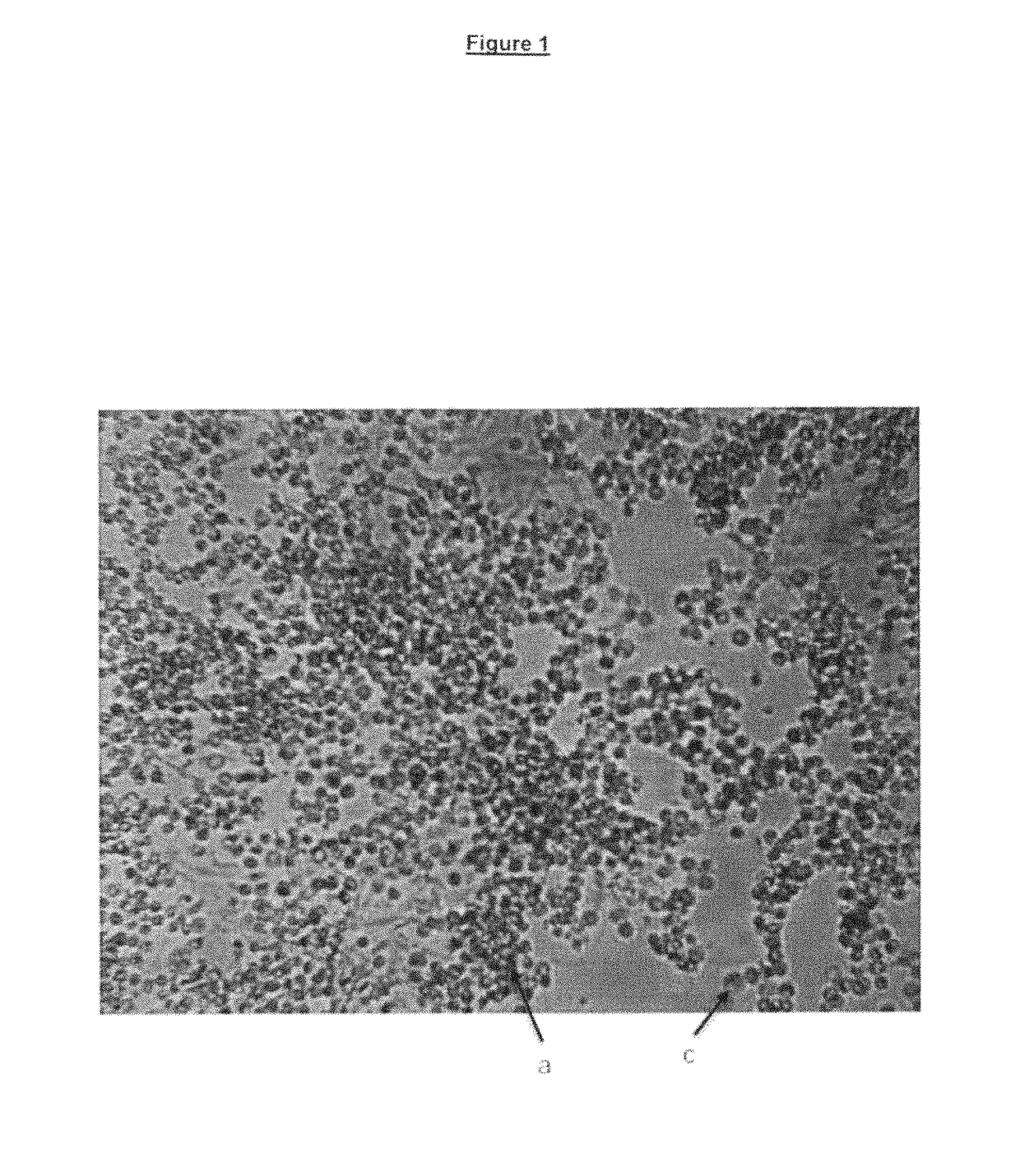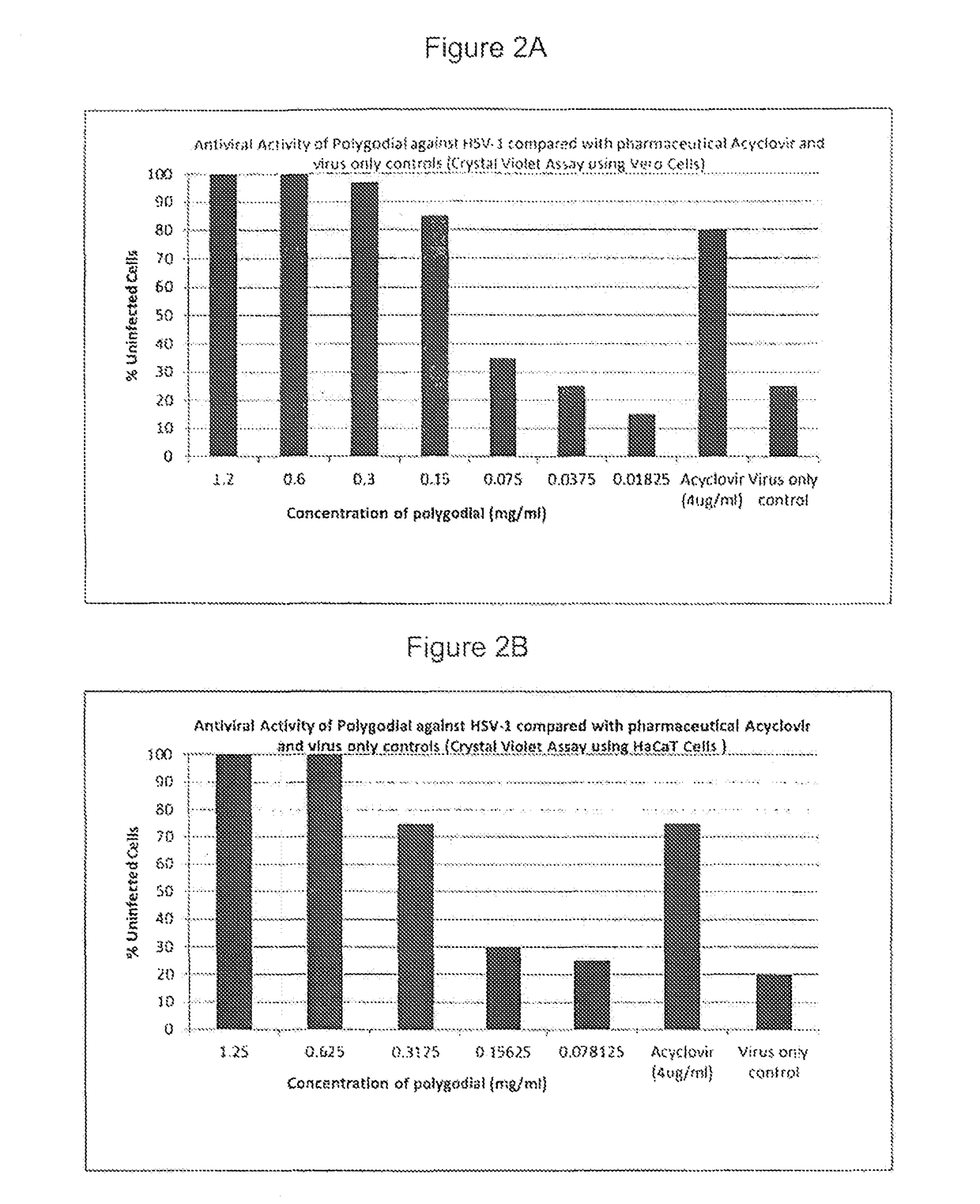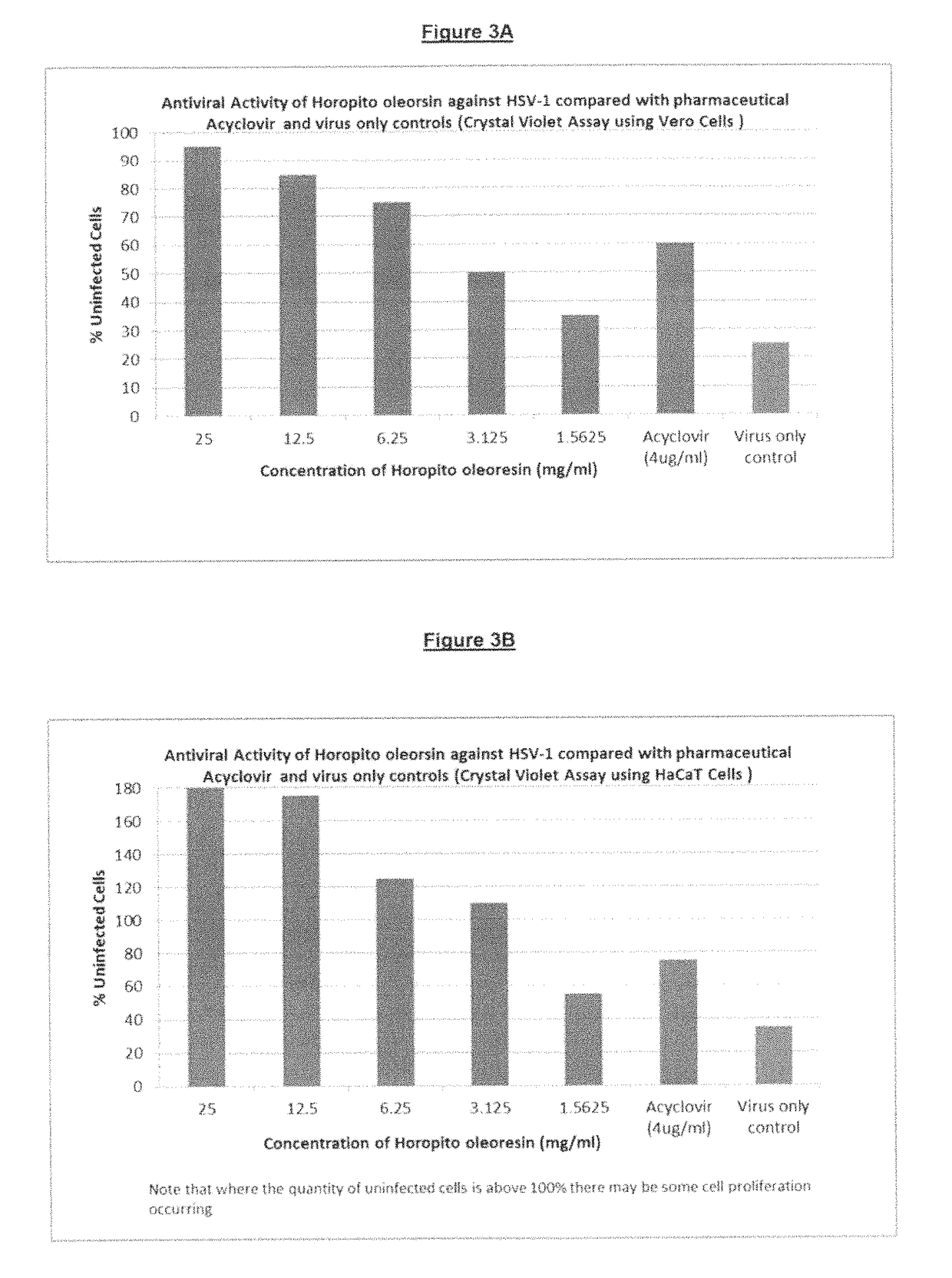Anti-Viral Compound and Composition
a technology of compound and composition, applied in the field of antiviral compound and composition, can solve the problems of more serious consequences, physical discomfort, and significant distress of sufferers, and achieve the effects of reducing cell viability, accelerating the exfoliation of infected epithelial cells, and low cytotoxicity
- Summary
- Abstract
- Description
- Claims
- Application Information
AI Technical Summary
Benefits of technology
Problems solved by technology
Method used
Image
Examples
example 1
nti-Viral Composition Containing Polygodial
[0099]
ComponentAmount (% w / w)RoleComposition 1: Cream-based compositionHoropito Oleoresin containing1.5 horopitoActive agentPolygodialoleoresin (0.3polygodial)WaterTo volumeCetyl alcohol8.45Surfactant / emulsifierApricot kernel oil (P armeniaca)6.0Skin careTea Tree oil (M. alternifolia)3.0Active agentStearyl Alcohol1.25StabiliserEumulgin B2 (Ceteareth-20)1.80EmulsifierLemon tea tree oil (L. Petersonii)1.0Active agentTocopherol acetate (Natural Source0.5Antioxidant, skinVitamin E)careAloe vera extract 200 × 10.35Skin carePotassium sorbate0.15preservativeLactic acid0.1pH modifierComposition 2: Oil-based compositionHoropito oleoresinApproximatelyActive agent10% w / w(containingapprox. 20%w / w polygodial)Extra Virgin Olive OilApproximatelyCarrier90% w / wComposition 3: Resin-based compositionHoropito Oleoresin100%Active agentcontainingapprox. 20.0%w / w polygodial
example 2
r Manufacturing the Cream-Based Composition
[0100]1. Prepare oil phase by heating Cetyl Alcohol, Stearyl Alcohol, Eumulgin B-2 and apricot kernel oil to 80° C. and add Tea Tree Oil and Vitamin E.[0101]2. Mix Aloe Vera and Potassium Sorbate in water at 80° C.[0102]3. Add the oil phase to the water phase and add the Lemon Tea Tree Oil.[0103]4. Allow to cool.[0104]5. Add oleoresin and adjust pH.
example 3
ry Trial Assessing Anti-Viral Activity of Three Exemplary Polygodial Compositions in Example 1 Against Herpes Simplex Type 1 Virus (HSV-1)
[0105]This study assessed the effectiveness of three trial compositions (see Example 1) containing various amounts of polygodial compared to a commercially available product, Acyclovir, which is therapeutically used to treat HSV-1 related cold sores.
[0106]In the examples illustrated in FIGS. 2 and 3, pure polygodial and Horopito oleoresin (extract of horopito leaves) were tested against Acyclovir.
[0107]In the example illustrated in FIG. 4, the resin-based, oil-based and cream-based compositions were comparatively assessed.
1. Methods
1.1 Culture and Titration of HSV-1
[0108]A wild-type HSV-1 obtained from ESR, Upper Hutt, was cultured in Vero (African Green Monkey kidney) tissue culture cells. HSV-1 virus was added to confluent Vero cell monolayers and allowed to infect until >70% cytopathic effect was observed. The infected cultures were then frozen...
PUM
| Property | Measurement | Unit |
|---|---|---|
| time | aaaaa | aaaaa |
| concentration | aaaaa | aaaaa |
| concentration | aaaaa | aaaaa |
Abstract
Description
Claims
Application Information
 Login to View More
Login to View More - R&D
- Intellectual Property
- Life Sciences
- Materials
- Tech Scout
- Unparalleled Data Quality
- Higher Quality Content
- 60% Fewer Hallucinations
Browse by: Latest US Patents, China's latest patents, Technical Efficacy Thesaurus, Application Domain, Technology Topic, Popular Technical Reports.
© 2025 PatSnap. All rights reserved.Legal|Privacy policy|Modern Slavery Act Transparency Statement|Sitemap|About US| Contact US: help@patsnap.com



